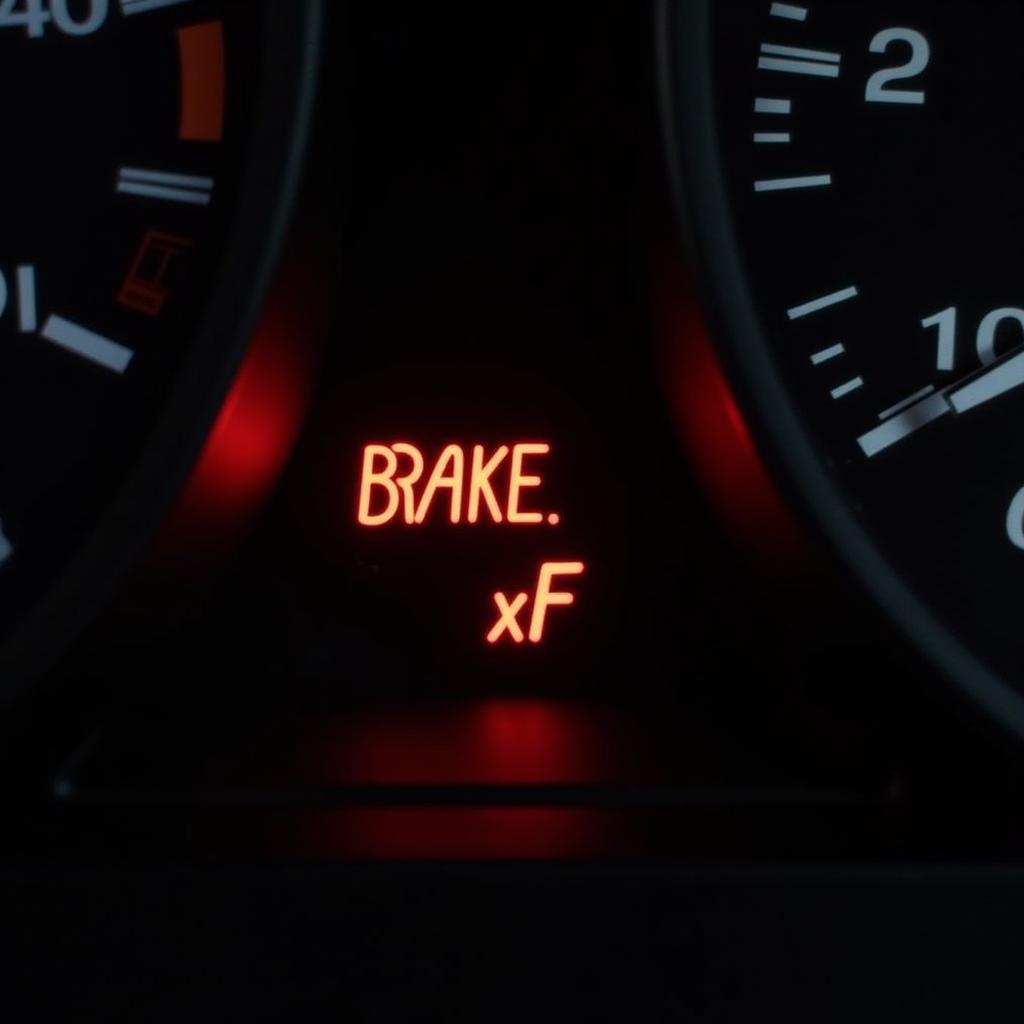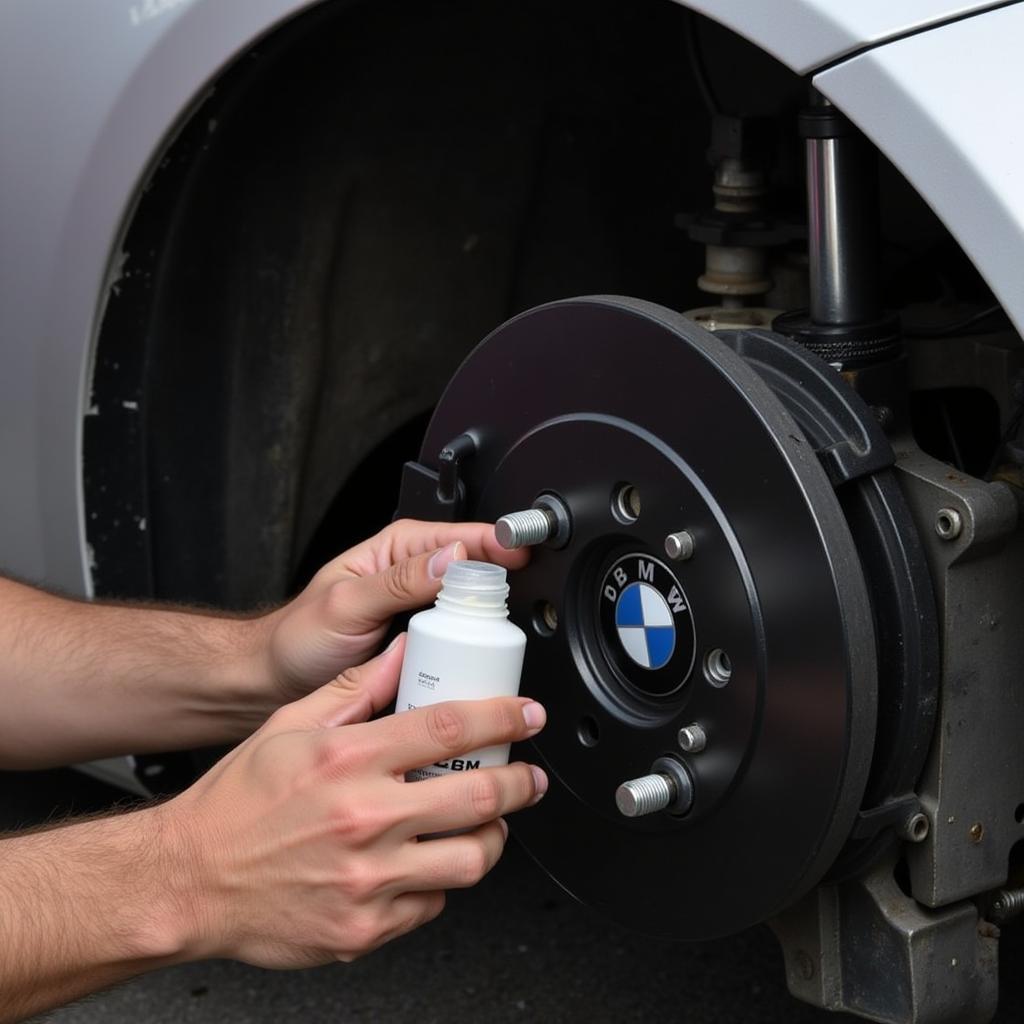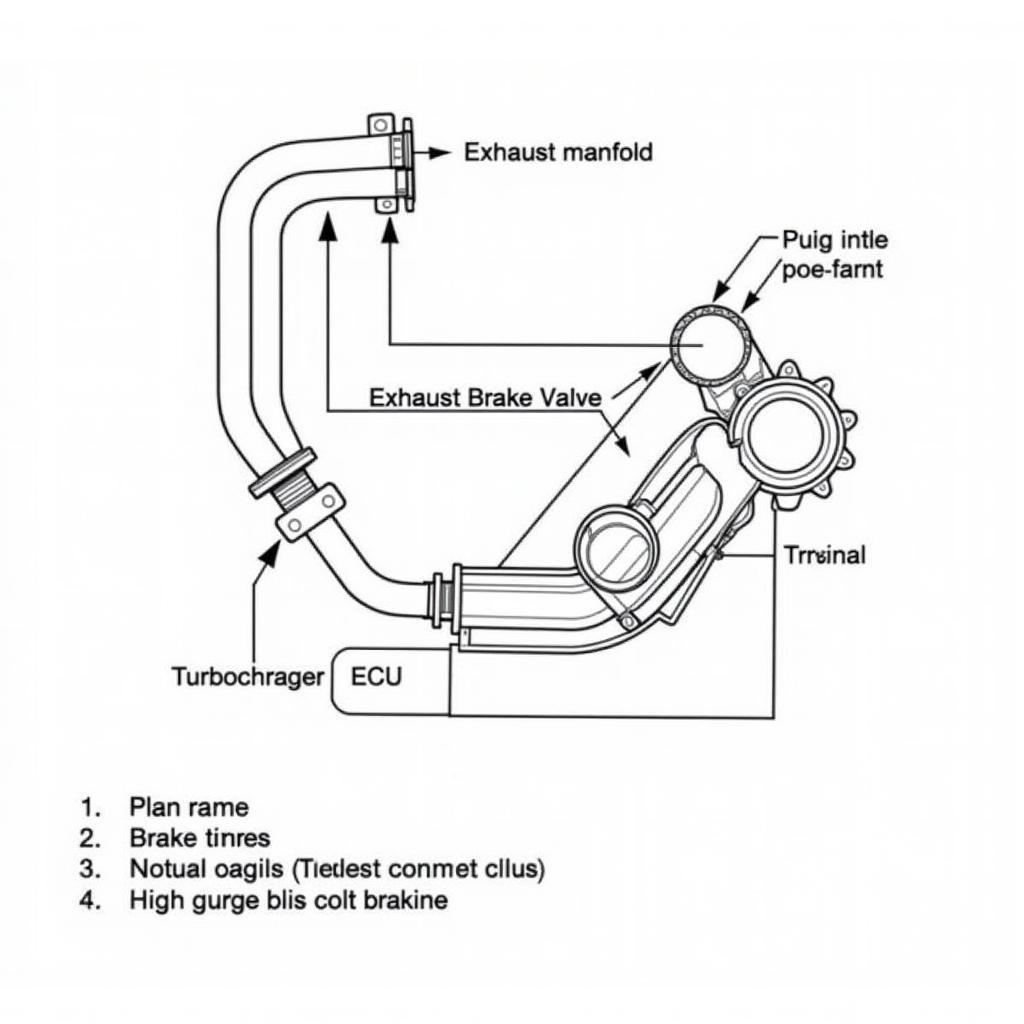The brake fluid warning light on your BMW 320d dashboard is a crucial safety indicator that should never be ignored. It signals a potential issue with your braking system, which could compromise your ability to slow down or stop safely. This article dives deep into the common causes of the BMW 320d brake fluid warning light, what it means for you, and how to address it effectively.
 BMW 320d Dashboard with Brake Fluid Warning Light On
BMW 320d Dashboard with Brake Fluid Warning Light On
Understanding Your BMW 320d Brake Fluid Warning Light
The brake fluid warning light, often depicted as a circle surrounded by parentheses with an exclamation mark (!) in the center, typically illuminates in conjunction with the ABS (Anti-lock Braking System) warning light. When this light appears, it signifies one of two primary issues:
- Low Brake Fluid Level: This is the most common culprit. Your BMW 320d, like all vehicles with hydraulic braking systems, relies on brake fluid to transmit force from the brake pedal to the brake pads. A leak in this system or worn brake pads can lead to a drop in brake fluid level, triggering the warning light.
- Brake System Malfunction: While less frequent, the warning light could indicate a more serious problem with your car’s braking system, such as a faulty ABS module, a failing master cylinder, or a severe fluid leak.
Diagnosing the Problem: Why is My Brake Fluid Light On?
Before taking any action, it’s crucial to accurately identify the root cause of the warning light. Here’s a step-by-step guide:
-
Check Your Brake Fluid Level: Park your BMW 320d on a level surface and turn off the engine. Locate the brake fluid reservoir under the hood – it’s usually a translucent plastic container with a black cap. Visually inspect the fluid level without opening the reservoir. Ideally, the fluid level should fall between the “Min” and “Max” markings.
-
Inspect for Leaks: If the fluid level is low, carefully examine the area around the brake fluid reservoir, brake lines, and near the wheels for any signs of leaks. Look for wet spots, drips, or a visible trail of brake fluid. Brake fluid is typically clear to amber in color and has a slightly oily texture.
 Checking the Brake Fluid Level in a BMW 320d
Checking the Brake Fluid Level in a BMW 320d
What to Do When Your Brake Fluid Light Comes On
The course of action you take depends largely on the severity of the issue:
-
Low Brake Fluid Level (No Visible Leaks): If the brake fluid level is slightly low and you don’t see any obvious leaks, you can carefully top up the reservoir with DOT 4 brake fluid, the type recommended for your BMW 320d. However, it’s highly advisable to have a professional mechanic inspect the system for hidden leaks or worn brake components.
-
Low Brake Fluid Level (With Visible Leaks): If you detect a leak, it’s essential not to drive the car. Continuing to drive with a brake fluid leak is extremely dangerous. Contact a qualified mechanic or tow your BMW 320d to a service center immediately to have the leak repaired and the system inspected.
-
Brake Fluid Light On (Normal Fluid Level): If the warning light is on despite a normal brake fluid level, it indicates a potential problem with your braking system itself, such as a faulty sensor, ABS module issue, or a failing master cylinder. This situation requires immediate attention from a professional mechanic.
 Mechanic Inspecting Brake System of a BMW 320d
Mechanic Inspecting Brake System of a BMW 320d
Expert Insight
“Many car owners underestimate the importance of regular brake fluid flushes,” says Jake Carter, a seasoned BMW mechanic with over 15 years of experience. “Brake fluid is hygroscopic, meaning it absorbs moisture over time. This moisture contamination can reduce braking efficiency and even lead to corrosion within the braking system. It’s crucial to follow your BMW 320d’s recommended maintenance schedule for brake fluid flushes.”
Preventative Measures: Keeping Your BMW 320d Brakes in Top Condition
To prevent brake fluid warning lights and ensure optimal braking performance, consider these proactive measures:
- Regular Brake Fluid Checks: Incorporate a quick visual check of your brake fluid level into your monthly car maintenance routine.
- Adhere to Scheduled Maintenance: Follow the manufacturer’s recommended service intervals for brake fluid flushes, typically every 2 years or 20,000 miles.
- Address Warning Signs Promptly: Never ignore dashboard warning lights related to your brakes. Early detection and prompt action can prevent more serious and costly repairs.
Conclusion
The brake fluid warning light in your BMW 320d is a crucial safety feature designed to alert you of potential issues with your braking system. Understanding its implications and taking prompt action can be the difference between a minor inconvenience and a major safety hazard. If you’re unsure about any aspect of your BMW 320d’s braking system or encounter the brake fluid warning light, always err on the side of caution and consult a qualified mechanic for a thorough inspection and repair.


